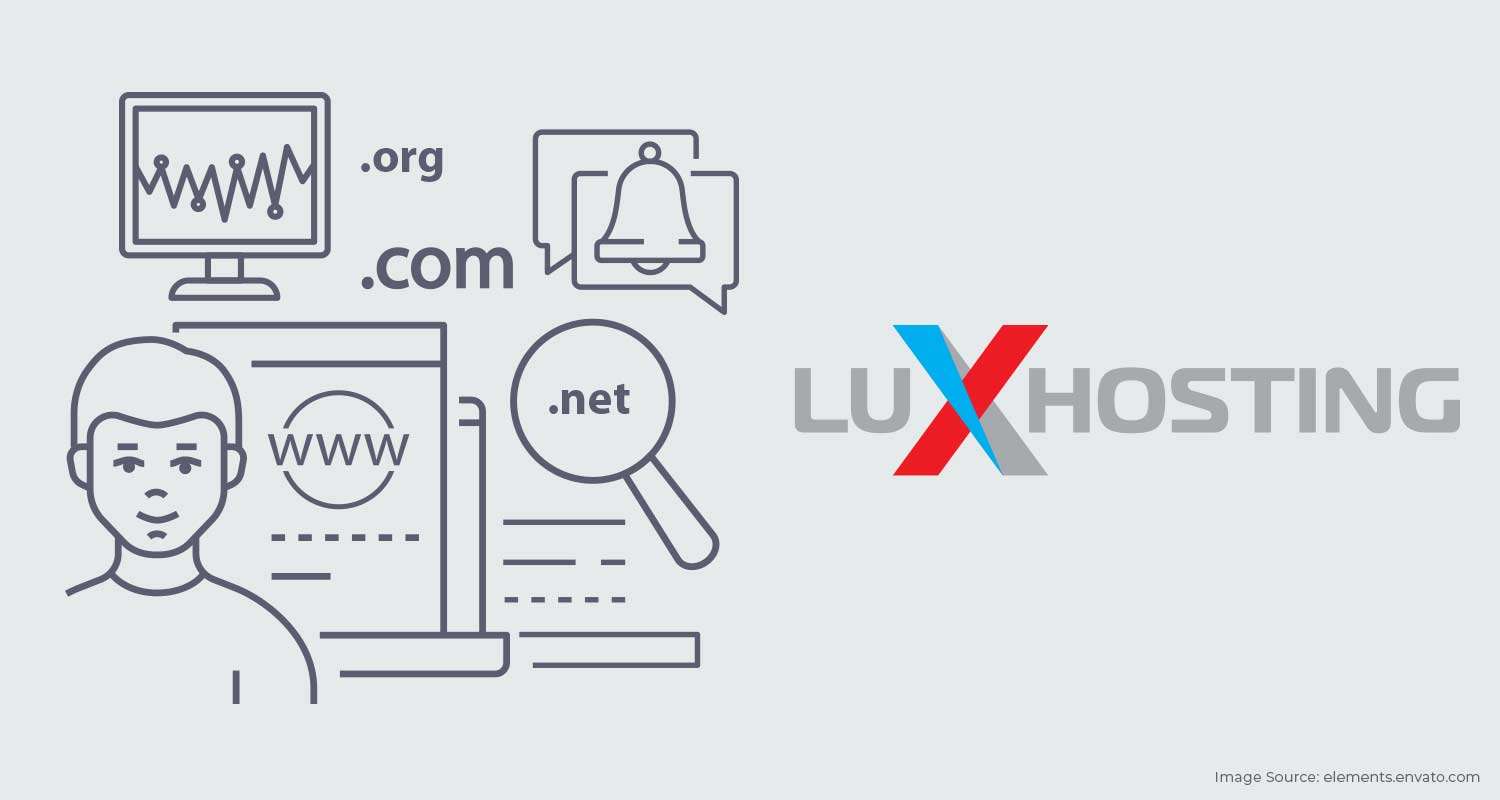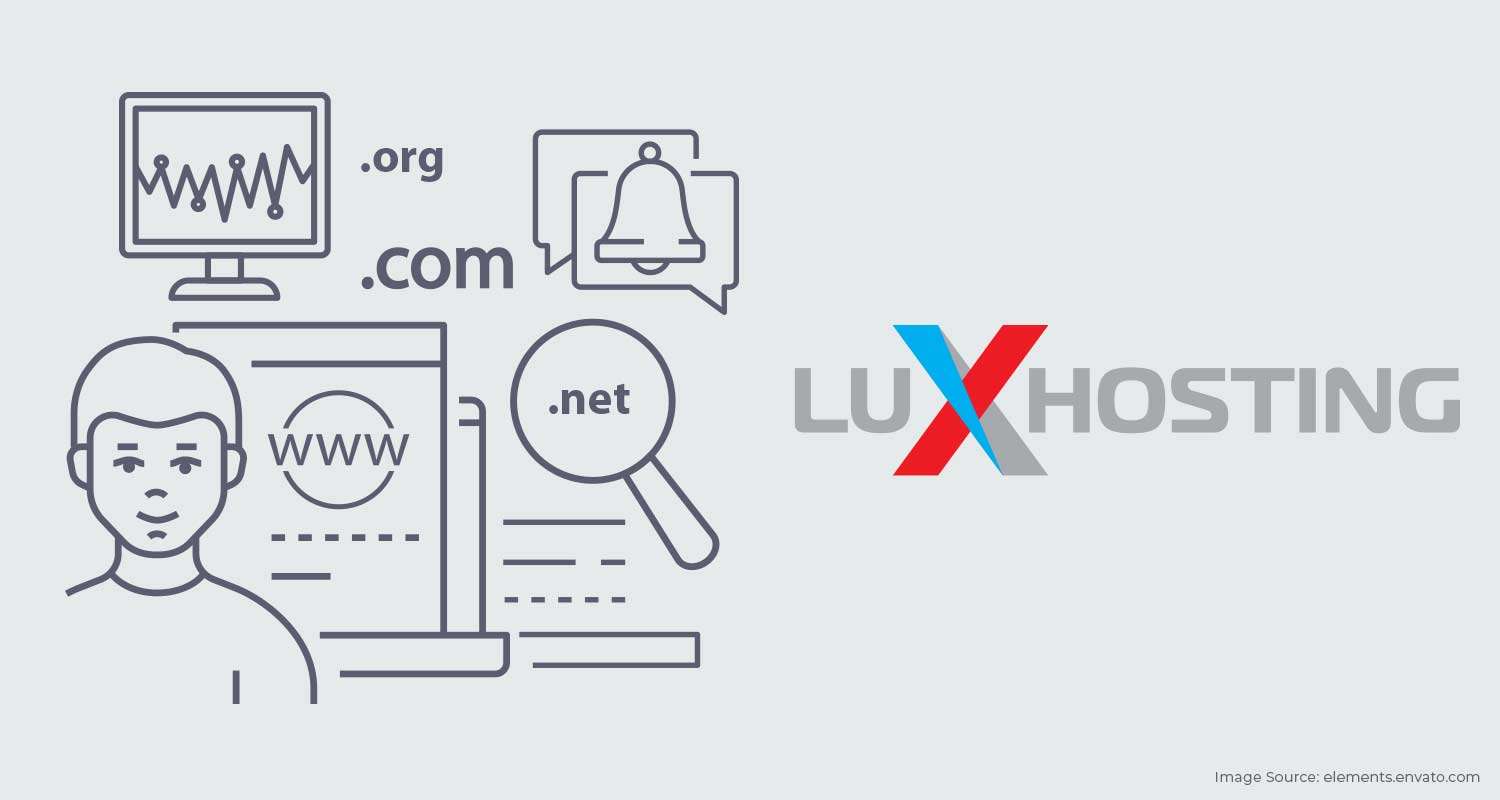If this is your first time creating your own website, you’re probably seeing a lot of tech jargon being thrown around without explanation. In this article, we’re breaking down two of the most commonly used (and infrequently explained) tech terms: domains and nameservers.
Let’s start with domains.
What are domains?

Source: Element.envato
A domain is the address of your website. It is written a way that makes it easier for people to understand and remember. It usually looks like this: www.yoursite.com.
Every domain is unique to a particular website. (No two websites can share a domain name.)
Website terms: All about domains
There are lots of interesting, new terms associated with domains. Just in case you encounter any of these terms in the wild, you might as well know what they mean, too:
- Top-level domain: This is the suffix at the very end of your domain name. Some examples are .org, .biz, .info, and .com. (These are the more established top-level domains. However, there are also newer, more fun top-level domains that you can add to your website.)
- Country Code Top-level domain: These are suffixes that are related to a specific country or region. For example, .ca (Canada), .uk (United Kingdom), and .eu (European Union).
- Sponsored Top-level domain: This is a domain suffix that represents a certain sponsor. For example, if your domain is sponsored by an organization related to education, your domain might be .edu. If it’s sponsored by the government, it might be .gov.
- Second-level domain: This is a domain suffix that’s attached to another domain suffix, e.g., .org.uk. (The .org is second-level to the .uk.)
- Domain flipping: Buying a domain name and selling it for a profit.
- Subdomain: This is an additional section of your domain that makes it easier for your visitors to navigate to specific areas of your website. For example, if you have an eCommerce store where you sell fluffy yellow mittens, your domain name would be www.fluffyyellowmittens.com. If you also want to write poetry where you rhapsodize about the joys of fluffy yellow mittens, your subdomain would be poetry.fluffyyellowmittens.com. The store portion of your website might be a subdomain like store.fluffyyellowmittens.com.
Why do I need domains?
Your business needs a website. Even if your business sells artisanal cheese, makes handmade chairs, or does something else that’s delightfully hands-on, people expect your business to have an online presence. A business without a website loses credibility.
Domains make it easier for people to remember your website. Computers don’t label your website with your domain. They use an IP address. An IP address is a long string of numbers and dots, arranged in a way that makes sense to your computer, but not so much to your visitors.
It’s much easier for your visitors to remember a fun, catchy domain name instead of trying to commit a line of random numbers to memory.
How do I get my own domain?
To get a domain, you need domain web hosting.
Web hosts rent server space to you, so you have somewhere to store your website. (Every website on the internet is stored on a server.)
To get great domain web hosting, you need to find a great web host and register your domain with them. That’s it! To know if you’re likely to get good domain web hosting from a specific company, look for these features:
High server uptime:
We offer 99.9% uptime, which means that when you register your domain with us, your website will be functioning for at least 99.9% of the time.
Great customer support:
Choose a company that has great, accessible customer support. We value our customers, and that’s why we offer customer support every day, round the clock.
The right hosting option for your site:
[caption id="attachment_12942" align="aligncenter" width="600"] Photo: Christina, Unsplash[/caption]
Photo: Christina, Unsplash[/caption]
If you want to create a site that comes in contact with lots of sensitive information, do they offer dedicated hosting (which means you get the whole server to yourself, instead of having to share it with other users)? If budget is your main concern, do they offer shared hosting plans, which often run a lot cheaper than other kinds of web hosting? (Our shared hosting plan starts at €8,70 a month.)
SSL certificates:

Once you’ve registered your domain, you’re going to want to keep your website safe. This means you’ll need to install an SSL certificate, which encrypts your data so it can’t be intercepted and read by hackers. Some web hosts offer free plans, with the “tiny” catch that any website you host with that plan won’t be compatible with an SSL certificate. It would be a mistake to choose a web host like this. SSL certificates are so important that you’re not even allowed to have an eCommerce website unless you have one.
That’s it for domains. Now, let’s move on to nameservers.
What is a nameserver?
Your web host will provide you with a nameserver, and you’ve probably seen mention of them somewhere on the internet without really understand what they do or why they’re important.
Remember how we said that domains make it easier for people to remember websites, and that websites are actually stored on computers according to their IP address (the string of numbers and dots)?
A nameserver is the key to making all of that work.
Nameservers are part of the Domain Name System (DNS) database. The DNS database converts domain names to IP addresses that computers can understand.
A nameserver is any server that has DNS software installed.
When someone types your domain into their browser, your domain’s nameservers send the visitor to your website, located on a specific web server operated by a specific web host.
Under normal circumstances, you don’t even really need to think about nameservers. But if you host your domain at one company and host your website at another company (This is a huge headache, but it is possible), you’ll need to update your nameserver to reflect this.
Conclusion
We recommend getting your domain hosting and your web hosting from the same company. That way, you won’t have to fiddle around with nameservers, and you can manage them under the same account.
And that’s it! Now you understand domains and nameservers. To learn more technical terms or more about web hosting in general, check out some more of our quick, easy-to-read blog posts!




